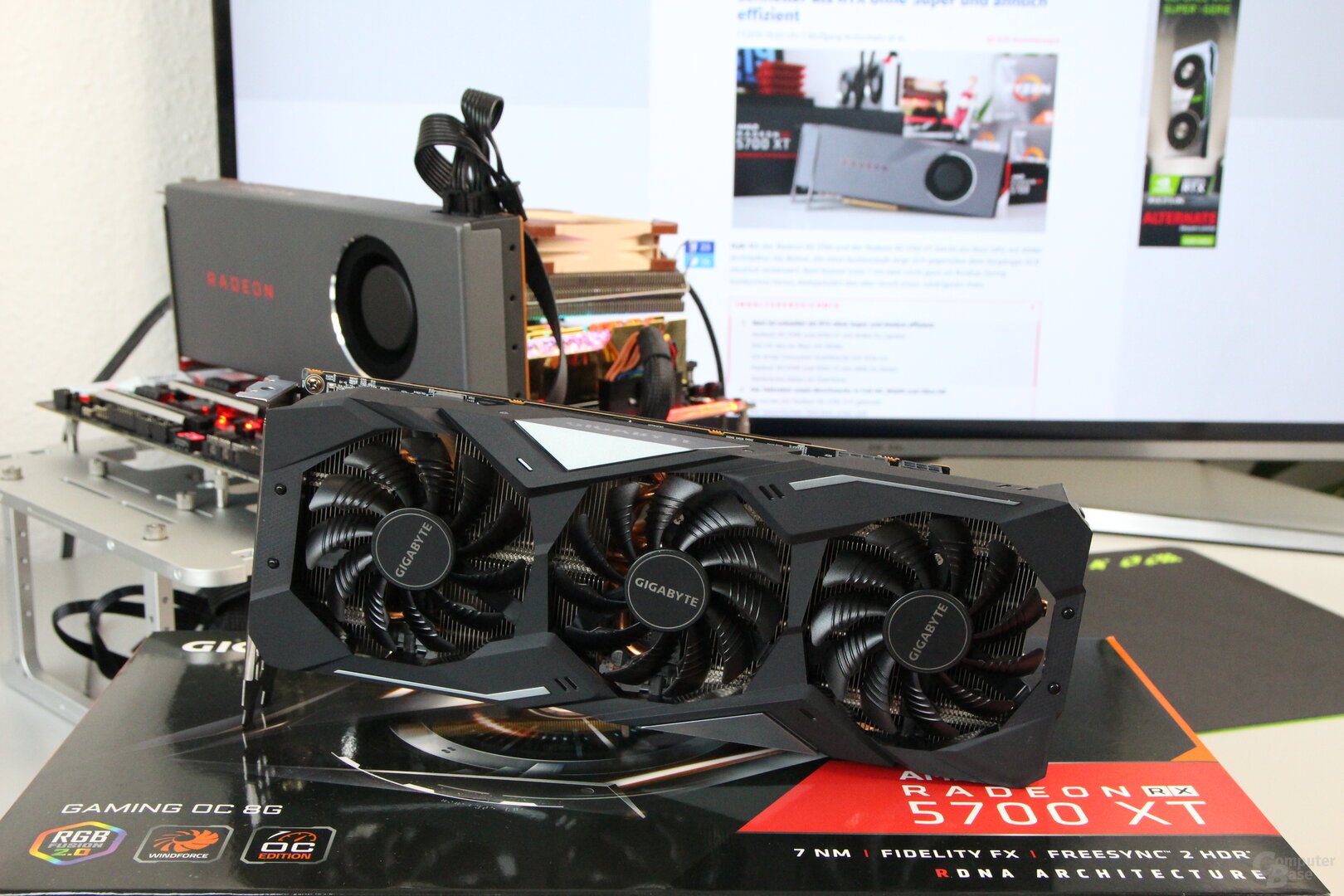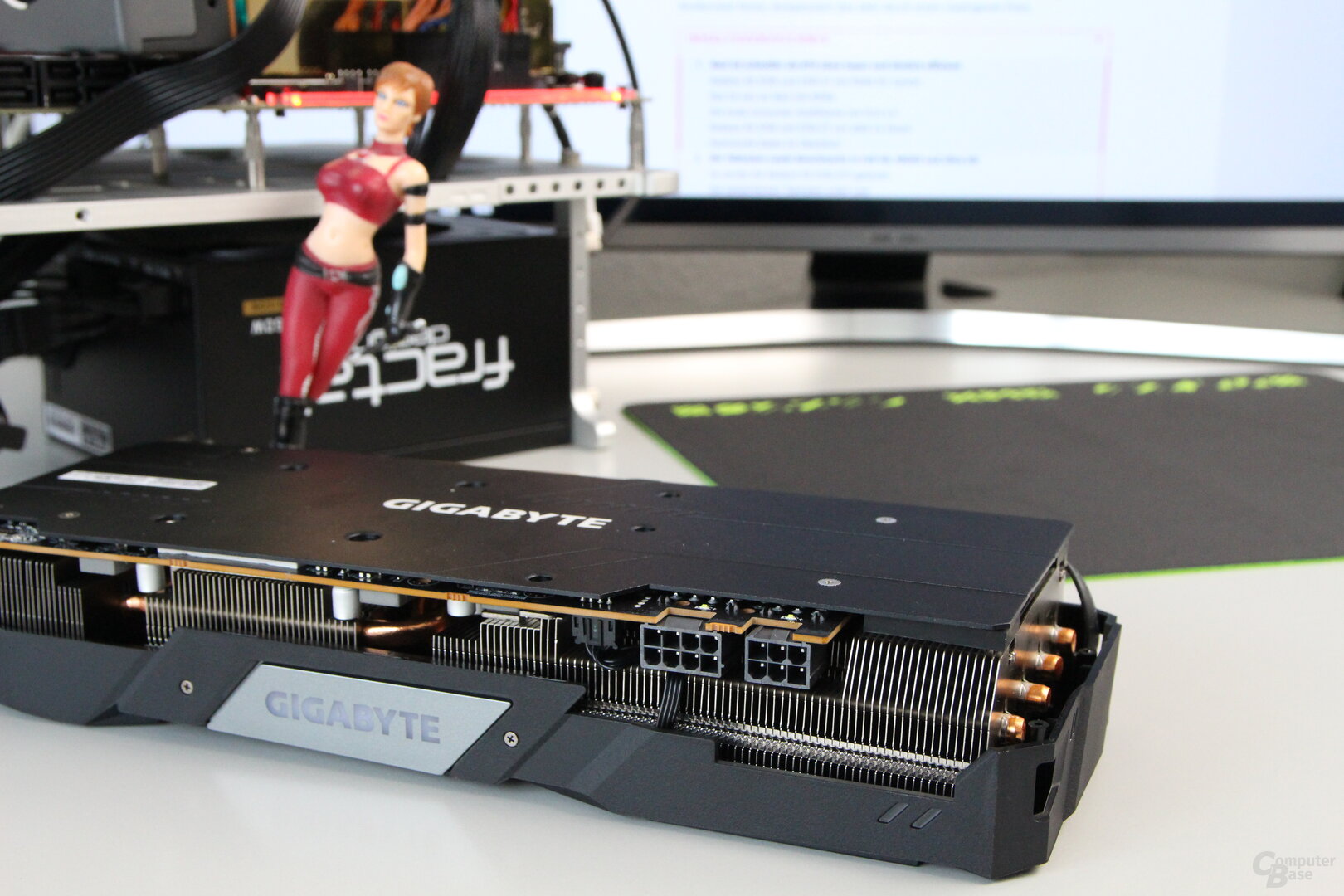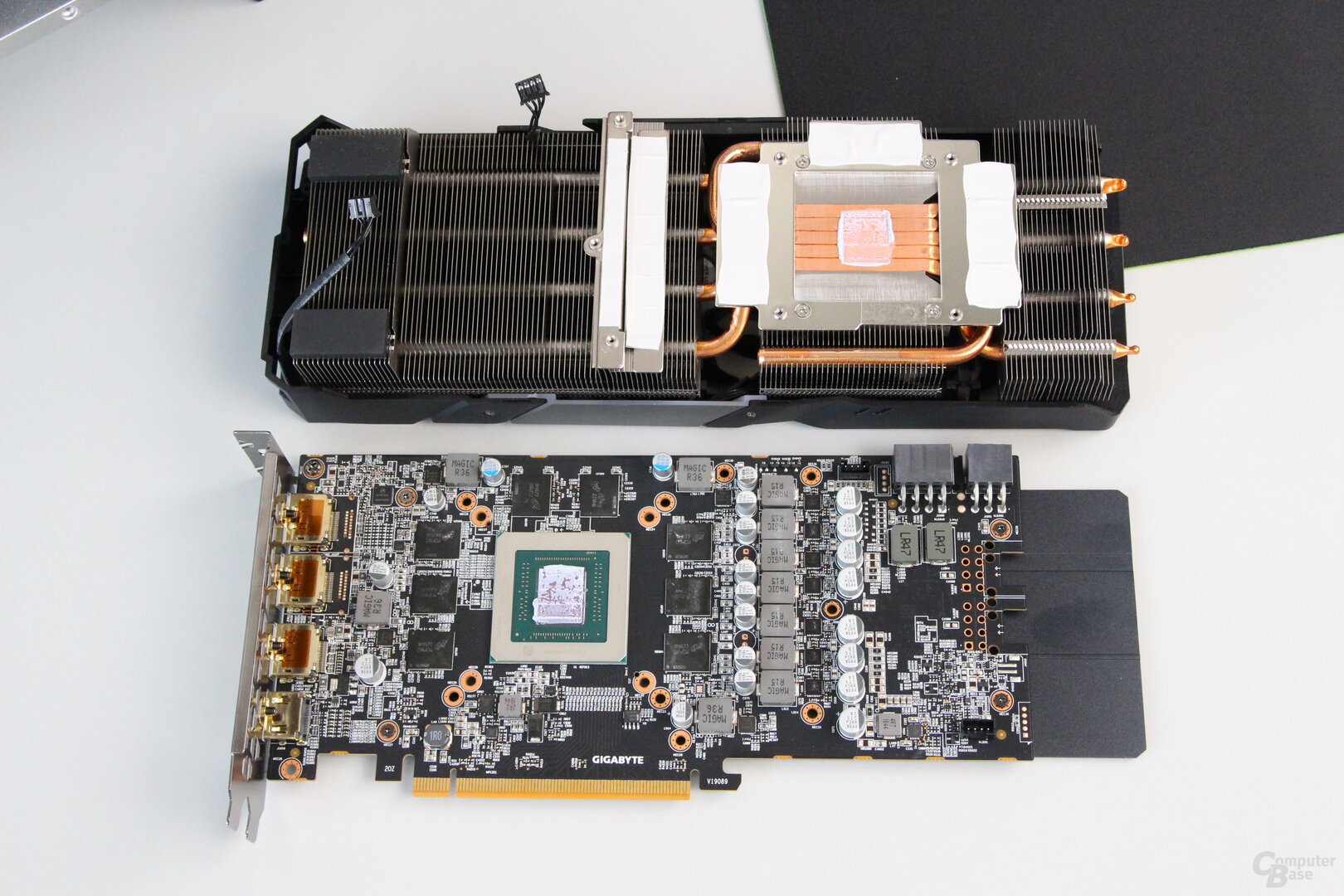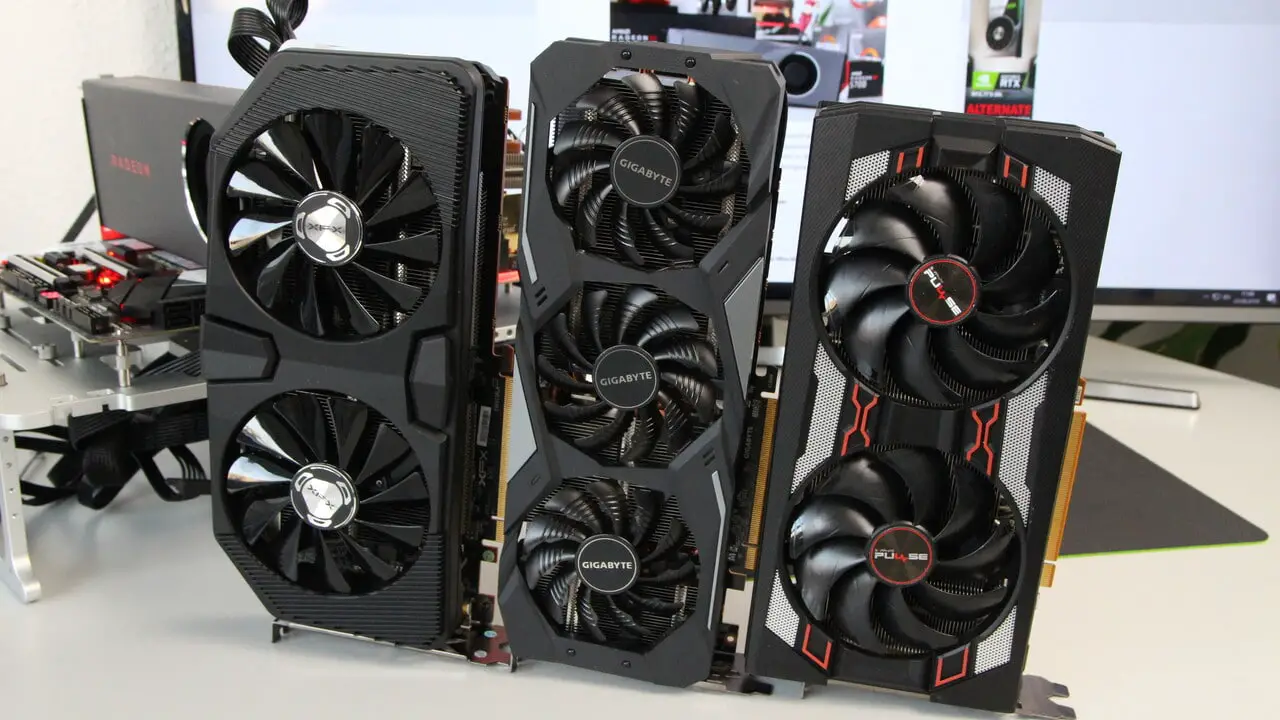– The Gigabyte Radeon RX 5700 XT Gaming OC comes in the design usual for the manufacturer and the cooling system is also known. In the test, the intersection with Navi 10 works well. However, there are no real technical highlights. But the price is attractive.
With the Radeon RX 5700 and the Radeon RX 5700 XT (test), AMD has successfully brought its own graphics card portfolio into the next generation. RDNA works much better than the old GCN. However, one thing has remained the same: the loud reference cooler. And so there is a lot of interest in the custom designs.
The Gigabyte RX 5700 XT Gaming OC is in the middle
Most custom designs of the Radeon RX 5700 XT are based either on the "top model" or "reference design replacement", most of the providers have both in their portfolios. Gigabyte takes the middle ground instead with the Radeon RX 5700 XT Gaming OC. The manufacturer's only custom design does not even try to compete with the major offshoots from Asus, MSI, PowerColor and Sapphire – both in terms of cooling and clock rates as well as the other features. However, the 2.5-slot cooling and simple RGB lighting are not an extremely optimized model, but the price is still low. And so the Radeon RX 5700 XT Gaming OC competes for example against the THICC2 and RAW2 models from XFX and the Sapphire Radeon RX 5700 XT Pulse.
The Gigabyte Radeon RX 5700 XT Gaming OC in detail
The Navi 10 graphics card is immediately familiar. Gigabyte uses the same 2.5-slot cooler on the GeForce RTX 2070 Super Gaming OC – and it does a very good job there. The Gigabyte Radeon RX 5700 XT Gaming OC is currently available from 426 euros.



The Windforce cooler is divided into three elements. The largest aluminum heat sink is located above the power supply, the middle section above the GPU and the smallest heat sink at the front end of the PCB. The elements are connected by means of five heat pipes that have direct contact with the GPU, but the two outer ones only partially. Three fans, 75 mm in diameter, provide the necessary fresh air. At low temperatures like on the Windows desktop, they switch off.
Gigabyte does not have a second BIOS
Gigabyte developed the PCB especially for the Radeon RX 5700 XT Gaming OC. There are seven voltage converter circuits for the power supply. An eight-pin and a six-pin power connector must be connected for operation. However, the PCB does not have a second BIOS component. This makes the Gigabyte graphics card, along with the MSI Radeon RX 5700 XT Gaming X, the only Navi-Custom card tested that only has a single BIOS. It is configured for a GPU power of 195 watts (+20 watts compared to the reference).
On the Gigabyte homepage there is an optionally installable BIOS for the graphics card, which offers a more aggressive fan control. The temperatures are therefore lower at the expense of the volume. Since this is of no interest to most buyers in this country, the optional BIOS in the article does not play a further role.
Like all other current Gigabyte accelerators with the WindForce cooler, the Radeon RX 5700 XT Gaming OC has RGB lighting. However, this is limited to the Gigabyte lettering on the side, which can be seen in the housing when the card is installed. However, the lighting is not only small, the colors also appear rather weak – many of them also cannot be displayed correctly. It is not more than a checklist feature.

A little more clock than the reference
With Navi it is more difficult than ever to speak of fixed clock rates. For this reason, the information from Sapphire should not be considered as set. According to the manufacturer, the applied frequencies should increase in most cases compared to the reference.
Gigabyte only speaks of marginally higher frequencies in the Radeon RX 5700 XT Gaming OC. The base clock of the graphics card should increase by 45 to 1,650 MHz compared to the reference design. The game clock is specified at 1,795 MHz, which also corresponds to a plus of 45 MHz. The maximum clock, however, is the same as in the standard model. Gigabyte speaks of a maximum of 1,905 MHz.
And how is the Gigabyte Radeon RX 5700 XT Gaming OC exactly different from the Radeon RX 5700 XT in reference design and the other Navi custom designs? The following table shows this at a glance.
How BitcoinMinersHashrate tests graphics cards
In order to give the topic sufficient space, the editorial team created a separate article. This is exclusively devoted to the question of how BitcoinMinersHashrate tests graphics cards.
Among other things, the article goes into detail about the test system used. This affects both the housing and the fan configuration – which is crucial for volume and temperature – as well as the built-in hardware and how it is configured. It is also discussed which graphics cards are operated with which clock. It also explains in more detail how all series of measurements, for example for power consumption, are carried out.
Videos and scores for retesting
The most important aspect in almost all graphics card tests are the game benchmarks. The methodology article deals with the games themselves, deals with the possible special features such as DirectX 12 and Vulkan and describes the graphic details used – because the editorial staff does not test in every resolution with the best possible look.
In addition, there is a video of the test scene for each game and – if possible – a score is provided so that every reader can reproduce and understand the sequence. Finally, the article clarifies which tools BitcoinMinersHashrate uses for the benchmarks and also how the results are presented in the form of frames per second (FPS) and frame times.
The actual clock rates under load
The Gigabyte Radeon RX 5700 XT Gaming OC consistently clocks slightly higher than AMD's reference design. Depending on the game, there are between 1,740 and 1,930 MHz, an average of about 40 MHz more than the standard model. The graphics card thus clocks higher than the XFX Radeon RX 5700 XT THICC2. You can also beat the Sapphire Radeon RX 5700 XT Pulse, albeit barely. Around 100 MHz are missing from the large models.
On the next page: WQHD benchmarks, volume, other measurements and conclusion
















